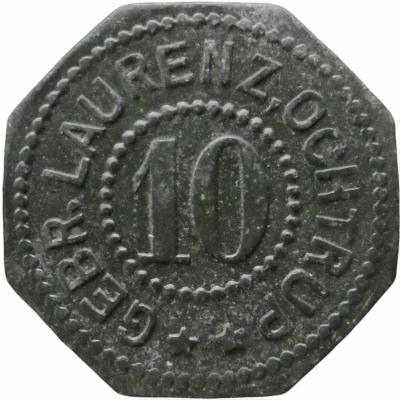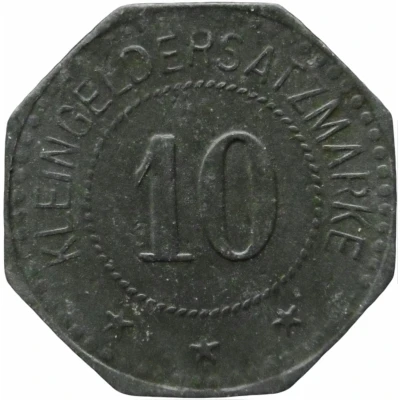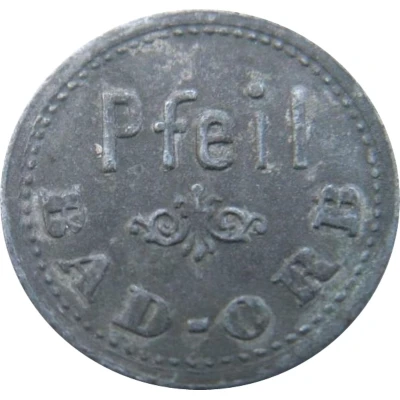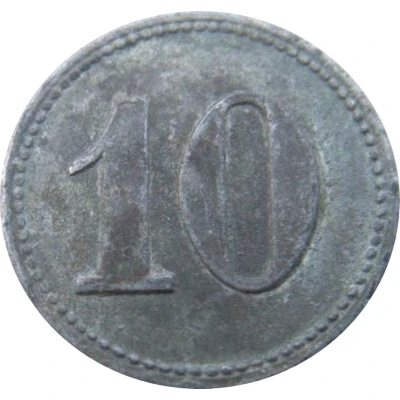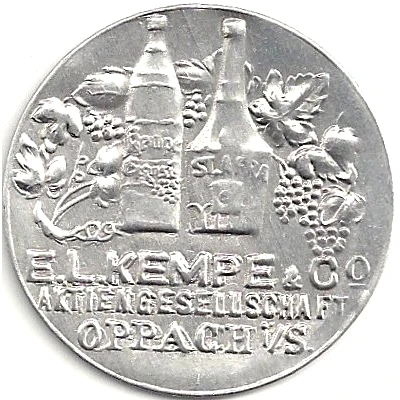
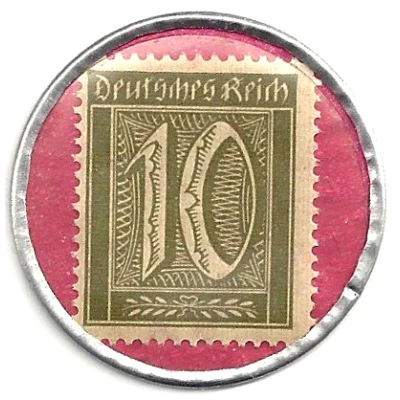

© batz
10 Pfennigs - Oppach (E.L. Kempe and Co.) ND
| Aluminium | 1 g | 33 mm |
| Issuer | German notgeld (Germany) |
|---|---|
| Type | Standard circulation coin |
| Value | 10 Pfennigs (10 Pfennige) (0.10) |
| Currency | Mark (1914-1924) |
| Composition | Aluminium |
| Weight | 1 g |
| Diameter | 33 mm |
| Thickness | 7 mm |
| Shape | Round |
| Orientation | Coin alignment ↑↓ |
| Demonetized | Yes |
| Updated | 2024-10-04 |
| Numista | N#18707 |
|---|---|
| Rarity index | 90% |
Reverse
Capsule with stamp
Lettering: Deutsches Reich 10
Comment
There are variants at the grapes:Interesting fact
One interesting fact about the 10 Pfennigs - Oppach (E.L. Kempe and Co.) ND coin from German notgeld (Germany) made of Aluminium weighing 1 g is that it was issued during a time of economic crisis in Germany, specifically during the hyperinflation period of the 1920s. The coin was part of a series of emergency currency issued by local authorities, known as "Notgeld," which translates to "emergency money" in English. The use of aluminum as a material for the coin was likely chosen due to its low cost and abundance, as well as its durability and resistance to corrosion. Despite its low value, the coin remains a fascinating piece of history and a testament to the resourcefulness of the German people during a time of economic hardship.
